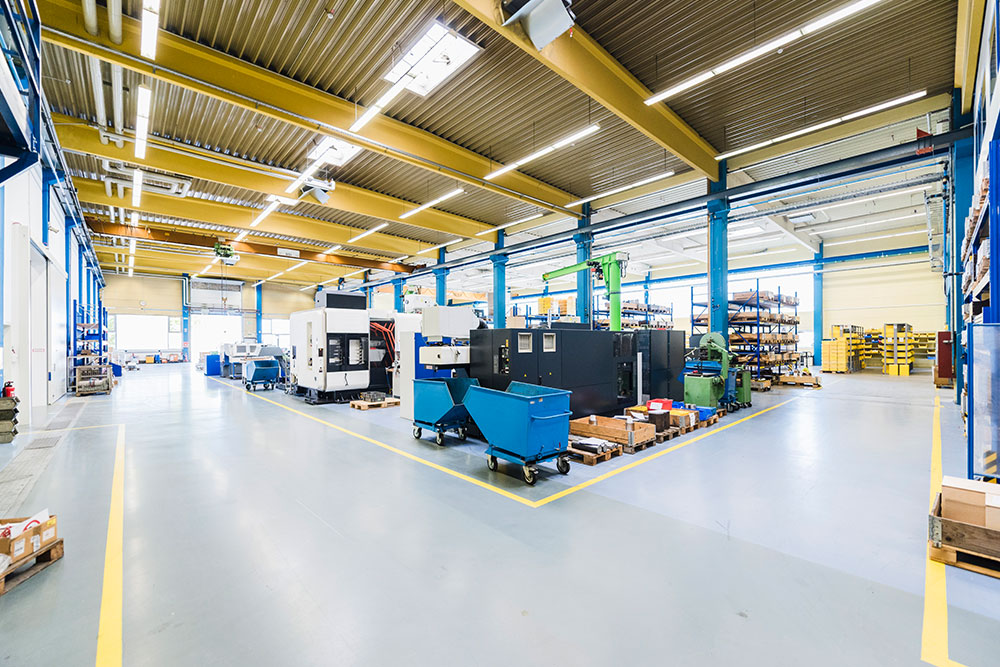
Benefits of Steel fiber Reinforced Concrete for Industrial Floors
INTRODUCTION
Industrial floors are exposed to various loading conditions, such as heavy rack posts, stacked loads, material handling equipment like forklifts, heavy tanks, and other processing machines.
Enterprises typically install a concrete-grade slab with reinforcement in the upper one-third layer to accommodate these loads, control shrinkage, and prevent cracks. Although support is generally placed in a specific region, it may not effectively manage cracks throughout the slab
Therefore, reinforcement should be provided at the bottom of the slab in the form of steel fibers mixed with concrete to ensure effective crack control throughout the slab.
This reinforcement method will ensure that the slab remains durable and can withstand the demands of a busy industrial environment.
How Steel-Fiber Reinforced Concrete Works
Steel fiber-reinforced concrete is a composite material consisting of hydraulic cement, fine or coarse aggregates, and steel fibers of rectangular cross-sections randomly dispersed throughout the matrix.
Unlike conventional reinforcement, which strengthens in one or two directions, TOCO stel fibers reinforce the concrete isotropically, improving its resistance to cracking, fragmentation, spalling, and fatigue.
Advantages of Steel Fiber Reinforced Concrete in Industrial Floors
- Improved Crack Resistance
One of the critical advantages of SFRC on industrial floors is its superior crack resistance. The random distribution of steel fibers throughout the concrete intercepts micro-cracks before they develop and impair the performance of the structure. This significantly reduces the risk of cracking, ensuring the long-term integrity and durability of the floor.
- Enhanced Flexural Strength
The addition of steel fibers improves the post-crack flexural strength of the concrete, providing excellent structural stability and load-bearing capacity. This is particularly important on industrial floors that experience heavy loads and high traffic.
- Increased Impact Resistance
Industrial floors are subjected to frequent impacts from heavy machinery, forklifts, and other equipment. SFRC provides excellent impact resistance, reducing the risk of surface damage, cracking, and spalling. The steel fibers absorb and distribute the impact load.
- Greater Durability
The steel fibers reinforce the concrete, making it more resistant to wear, abrasion, and fatigue. This results in a longer service life and reduced maintenance costs, making SFRC an economically viable choice for industrial flooring applications.
- Thinner Slab Designs
The use of steel fiber reinforcement allows for the design of thinner floor slabs without compromising structural integrity. Thinner slabs reduce the amount of concrete required, resulting in cost savings and faster construction times.
- Improved Joint Performance
The random distribution of steel fibers throughout the concrete ensures there is no weak plane for cracks to follow, reducing the risk of joint failure. This results in a more robust and durable floor capable of withstanding heavy loads and frequent traffic.
- Resistance to Spalling
Spalling, or the breaking off of concrete surface layers, is a common issue on industrial floors. SFRC significantly reduces the risk of spalling by enhancing the overall durability and crack resistance of the concrete.
- Simplified Construction Process
The elimination of conventional reinforcement, such as welded wire fabric, reduces the complexity of joint formation and maintenance. Additionally, the random distribution of steel fibers throughout the concrete eliminates the need for precise placement of reinforcement, saving time and effort during construction.

Case Study of a Warehouse: Application Of Steel Fiber Reinforced Slab
With the rapid advancements in technology, warehouse facilities are now able to make full use of automated systems and radio shuttles to optimize their operations.
One of the warehouses installed storage tanks and heavy racks. To make sure their design was conventional, a thorough check was done for the grade slab using elastic analysis. They added reinforcement to control cracks and shrinkage, resulting in a thickness of 300 mm in most areas.
Next, they examined the design for steel fiber-reinforced concrete using plastic analysis. As a result, they reduced the thickness to 200 mm in most sections and 220 mm in a strip in the process area, which had ample storage tanks.
Steel fiber has a unique aspect ratio, which is the ratio of its length to its diameter. Fibers with a higher aspect ratio provide better pull-out resistance, but an excessively high aspect ratio can cause balling. To avoid this, they chose fibers with hooked ends. They used threads with a thickness of 0.75 mm and a length of 60 mm, resulting in an aspect ratio of 80.
To determine the slab thickness, the point loads were the critical loads in all areas. They used variable dosages and grades of concrete to achieve an economical solution. Designing a uniform slab for the entire room would have resulted in a conservative design in most areas, so they opted for this approach instead.
Steel fibers are commonly used as an effective means to prevent cracking in concrete slabs. The fibers are evenly distributed throughout the thickness of the slab, which allows them to stop cracks from spreading from the location they originate.
In addition, steel fibers provide excellent resistance to moments, energy absorption, and impact. The effectiveness of the steel fibers depends on the fiber type, the fiber content, and the length-to-diameter ratio, as this affects the interfacial surface area and the fiber efficiency. It's important to note that while excellent aspect ratios lead to higher efficiency, excessively high ratios can reduce the workability of the concrete mix. In practical applications, it's common to use an aspect ratio of less than 100.
Conclusion
Embracing the Benefits of Steel Fiber Reinforced Concrete for Durable and Resilient Industrial Flooring Solutions. At TOCO Steels Pvt. Ltd., we manufacture hook-end steel fibers, which are mainly used for concrete reinforcement of industrial floors. From improved crack resistance and enhanced flexural strength to increased impact resistance and excellent durability, SFRC provides a reliable and cost-effective solution for demanding industrial environments.
The use of SFRC allows for thinner slab designs, simplifies the construction process, and results in long-term cost savings. With its superior performance characteristics, SFRC is revolutionizing the construction industry and setting new standards for industrial flooring.
